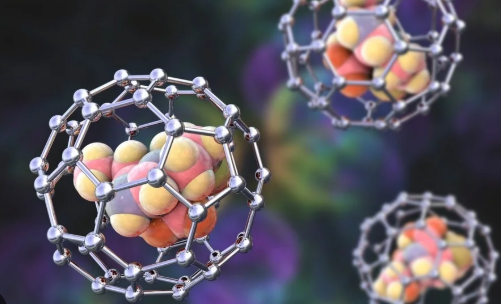Skin aging is a complex physiological phenomenon characterized by structural and functional decline, driven by both intrinsic and extrinsic factors. As the global population ages, the demand for effective anti-aging interventions has intensified. While numerous active ingredients with potential anti-aging properties exist, their efficacy is often limited by poor skin penetration, low bioavailability at target sites, and a lack of synergistic action to address the multifaceted nature of skin aging. To overcome these limitations, the development of novel delivery systems that can enhance the penetration and utilization of multiple active ingredients with complementary mechanisms has become a significant focus in cosmetic research. This study investigated the potential of ribose/collagen/decarboxylated carnitine hydrochloride/palmitoyl tripeptide-1 composite nanocarriers (RCDP NCs), formulated using transdermal drug delivery nanotechnology, as a strategy to mitigate skin aging more effectively by simultaneously targeting autophagy regulation and oxidative stress inhibition. The rationale behind this approach lies in the established anti-aging properties of each component and the capacity of nanocarriers to improve their delivery and synergistic effects.
Methods
The researchers synthesized RCDP NCs and characterized their physicochemical properties. Percutaneous penetration was evaluated using fluorescently labeled nanocarriers (RhoB NCs) on pig skin using Franz diffusion cells and confocal microscopy. Cellular uptake in keratinocytes (HaCaT) and fibroblasts (HSF) was assessed through confocal microscopy and flow cytometry. The anti-aging effects were further investigated in HaCaT and HSF cells by measuring cell proliferation, antioxidant enzyme activities, lipid peroxidation products, β-galactosidase staining for senescence, and the expression of autophagy-related proteins, along with transmission electron microscopy to observe autophagosomes.
Key Findings
•The synthesized RCDP NCs exhibited a small average particle size (33.1 nm) and a negative Zeta potential (-34.2 mV), indicating good stability and uniform vesicle dimensions.
•RCDP NCs demonstrated significantly enhanced percutaneous penetration, reaching a dermal depth of 460.0 µm within 4 hours, outperforming free rhodamine B.
•Cellular uptake of RCDP NCs by both keratinocytes and fibroblasts was substantially increased compared to free rhodamine B, indicating efficient delivery of encapsulated components.
•RCDP NCs promoted the proliferation of both keratinocytes and fibroblasts.
•Treatment with RCDP NCs significantly enhanced the activity of key antioxidant enzymes (CAT, SOD, GSH-Px) and reduced the production of the lipid oxidation marker MDA in HSF cells under oxidative stress.
•RCDP NCs led to a more pronounced reduction in β-galactosidase staining in senescent HSF cells compared to free RCDP, suggesting a greater anti-senescence effect.
•The study demonstrated that RCDP NCs effectively promoted autophagy, as evidenced by a decrease in the p62 protein (an indicator of reduced autophagy), an increase in the LC3II/LC3I ratio (a marker of autophagosome formation), and a higher number of autophagosomes observed via transmission electron microscopy in HSF cells.
This research showcases the novelty of combining transdermal drug delivery nanotechnology with a carefully selected combination of active anti-aging ingredients (ribose, collagen, decarboxylated carnitine HCl, and palmitoyl tripeptide-1) within a single composite nanocarrier system. The study’s key contribution lies in demonstrating that this approach significantly enhances the delivery and efficacy of these ingredients, leading to improved skin penetration, cellular uptake, and synergistic anti-aging effects through the simultaneous modulation of oxidative stress and autophagy pathways. The superior performance of RCDP NCs compared to their free counterparts highlights their potential as advanced ingredients for next-generation anti-aging cosmetic formulations. Future research should focus on further optimizing these nanocarriers, conducting in vivo studies to validate these findings, and exploring their long-term effects and safety profiles for practical application in skincare.
Link to the study: https://www.mdpi.com/2079-9284/12/2/83

